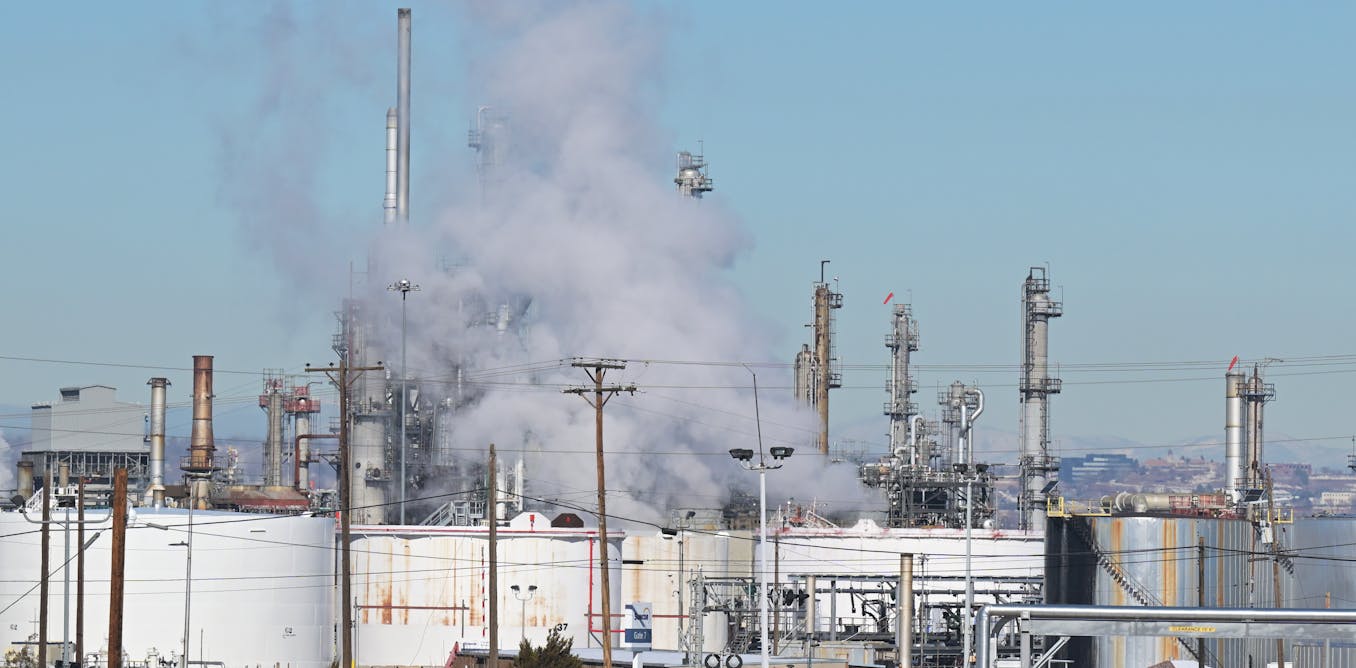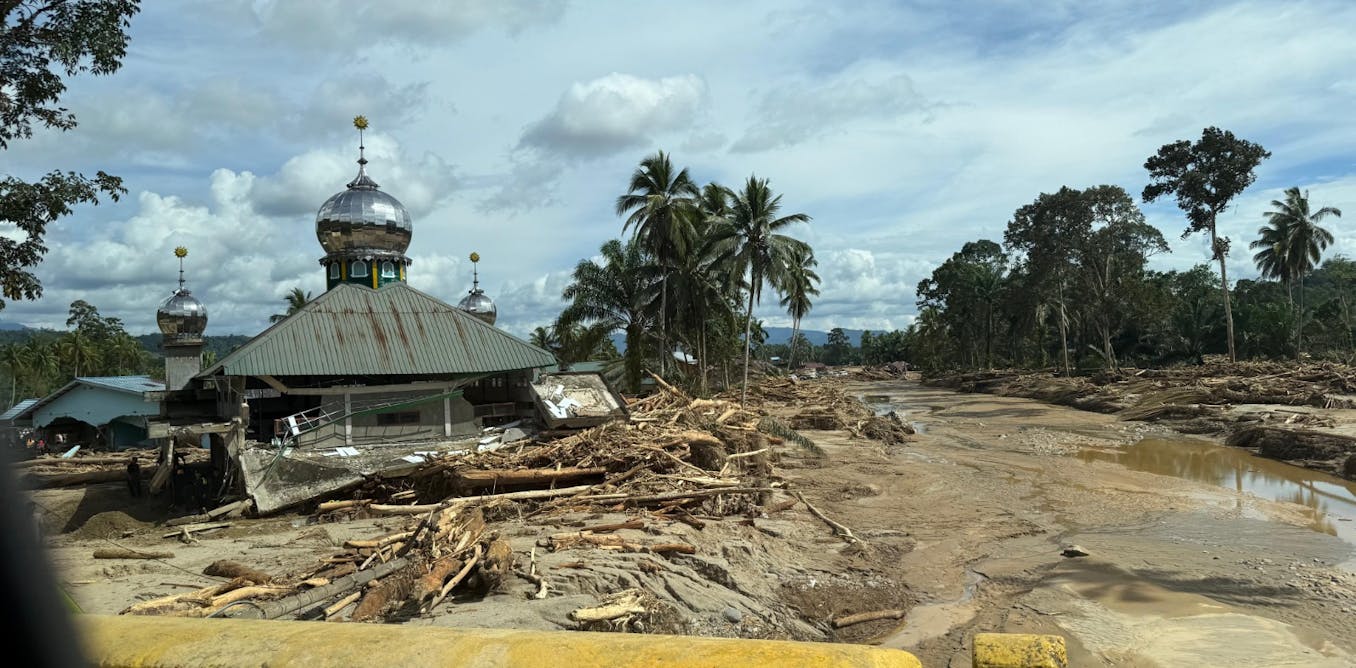The Globeville, Elyria-Swansea and Commerce City communities in metro Denver are choked by air pollution from nearby highways, an oil refinery and a Superfund site.
While these neighborhoods have long suffered from air pollution, they’re not the only ones in Colorado.
Now, Colorado is taking a major step to protect people from air pollutants that cause cancer or other major health problems, called “air toxics.” For the first time, the state is developing its own state-level air toxic health standards.
In January 2025 Colorado identified five air toxics as “priority” chemicals: benzene, ethylene oxide, formaldehyde, hexavalent chromium compounds and hydrogen sulfide.
The state is in the process of setting health-based standards that will limit the amount of each chemical allowed in the air. Importantly, the standards will be designed to protect people exposed to the chemicals long term, such as those living near emission sources. Exposure to even low amounts of some chemicals, such as benzene, may lead to cancer.
As a researcher studying chemical exposure and health, I measure and evaluate the impact of air pollution on people’s well-being.
Colorado’s new regulations will draw on expert knowledge and community input to protect people’s health.
Communities know what needs regulation
In your own community, is there a highway that runs near your house or a factory with a bad odor? Maybe a gas station right around the corner? You likely already know many of the places that release air pollution near you.
When state or local regulators work with community members to find out what air pollution sources communities are worried about, the partnership can lead to a system that better serves the public and reduces injustice.
For example, partnerships between community advocates, scientists and regulators in heavily polluted and marginalized neighborhoods in New York and Boston have had big benefits. These partnerships resulted in both better scientific knowledge about how air pollution is connected to asthma and the placement of air monitors in neighborhoods impacted the most.
In Colorado, the process to choose the five priority air toxics included consulting with multiple stakeholders. A technical working group provided input on which five chemicals should be prioritized from the larger list of 477 toxic air contaminants.
The working group includes academics, members of nongovernmental organizations such as the Environmental Defense Fund – local government and regulated industries, such as the American Petroleum Institute.
Hyoung Chang/Denver Post via GettyImages
There were also opportunities for community participation during public meetings.
At public hearings, community groups like GreenLatinos argued that formaldehyde, instead of acrolein, should be one of the prioritized air toxics because it can cause cancer.
Additionally, formaldehyde is emitted in some Colorado communities that are predominantly people of color, according to advocates for those communities. These communities are already disproportionately impacted by high rates of respiratory disease and cancer.
Other members of the community also weighed in.
“One of my patients is a 16-year-old boy who tried to get a summer job working outside, but had to quit because air pollution made his asthma so bad that he could barely breathe,” wrote Logan Harper, a Denver-area family physician and advocate for Healthy Air and Water Colorado.
How is air quality protected?
At the national level, the Clean Air Act requires that six common air pollutants, such as ozone and carbon monoxide, are kept below specific levels. The act also regulates 188 hazardous air pollutants.
Individual states are free to develop their own regulations, and several, including California and Minnesota, already have. States can set standards that are more health-protective than those in place nationally.
Four of the five chemicals prioritized by Colorado are regulated federally. The fifth chemical, hydrogen sulfide, is not included on the U.S. Environmental Protection Agency’s hazardous air pollutant list, but Colorado has decided to regulate it as an air toxic.
State-level regulation is important because states can focus on air toxics specific to their state to make sure that the communities most exposed to air pollution are protected. One way to do this is to place air pollution monitors in the communities experiencing the worst air pollution.
For example, Colorado is placing six new air quality monitors in locations around the state to measure concentrations of the five priority air toxics. It will also use an existing monitor in Grand Junction to measure air toxics. Two of the new monitors, located in Commerce City and La Salle, began operating in January 2024. The remainder will start monitoring the air by July 2025.
When Colorado chose the sites, it prioritized communities that are overly impacted by social and environmental hazards. To do this, officials used indexes like the Colorado EnviroScreen, which combines information about pollution, health and economic factors to identify communities that are overly burdened by hazards.
The Commerce City monitor is located in Adams City, a neighborhood that has some of the worst pollution in the state. The site has air toxics emissions that are worse than 95% of communities in Colorado.
Air toxics and health
The five air toxics that Colorado selected all have negative impacts on health. Four are known to cause cancer.
Benzene, perhaps the most well known because of its ability to cause blood cancer, is one. But it also has a number of other health impacts, including dampening the ability of the immune system and impacting the reproductive system by decreasing sperm count. Benzene is in combustion-powered vehicle exhaust and is emitted during oil and gas production and refinement.
Ethylene oxide can cause cancer and irritates the nervous and respiratory systems. Symptoms of long-term exposure can include headaches, sore throat, shortness of breath and others. Ethylene oxide is used to sterilize medical equipment, and as of 2024, it was used by four facilities in Colorado.
Formaldehyde is also a cancer-causing agent, and exposure is associated with asthma in children. This air toxic is used in the manufacture of a number of products like household cleaners and building materials. It is also emitted by oil and gas sources, including during fracking.
Hexavalent chromium compounds can cause several types of cancer, as well as skin and lung diseases such as asthma and rhinitis. A major source of hexavalent chromium is coal-fired power plants, of which Colorado currently has six in operation, though these plants are scheduled to close in the next five years. Other sources of hexavalent chromium include chemical and other manufacturing.
Finally, long-term exposure to hydrogen sulfide can cause low blood pressure, headaches and a range of other symptoms, and has been associated with neurological impacts such as psychological disorders. Some sources of hydrogen sulfide include oil refineries and wastewater treatment plants.
Read more of our stories about Colorado.

The post “Colorado is tackling air pollution in vulnerable neighborhoods by regulating 5 air toxics” by Jenni Shearston, Assistant Professor of Integrative Physiology, University of Colorado Boulder was published on 02/25/2025 by theconversation.com































Leave a Reply